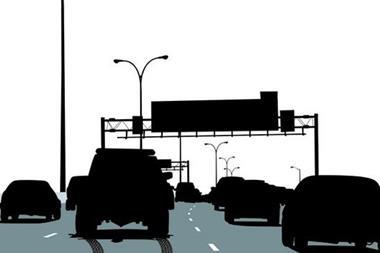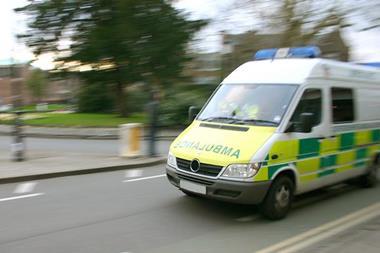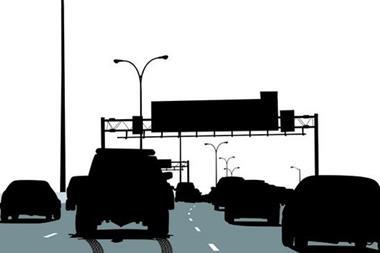Insurance Times looks at the latest developments in a sector that continues to develop apace

The hype surrounding telematics insurance has grown steadily and the sector has seen even more political interest, technological development and new entrants since the first two telematics roundups published by Insurance Times.
Telematics came under the political spotlight in May at the second insurance summit on whiplash and motor insurance. Transport secretary Justine Greening, who chaired the meeting, quizzed insurer bosses on the interest shown by young drivers in telematics and how the technology could help reduce claims and premiums.
The summit was also attended by justice minister Jonathan Djanogly, minister of state Oliver Letwin, roads minister Mike Penning and health minister Simon Burns. Other attendees were RSA UK and western Europe chief executive Adrian Brown, AXA UK chief executive Paul Evans, Aviva UK general insurance chief executive David McMillan, Biba head of corporate affairs Graeme Trudgill, Zurich UK chief executive Stephen Lewis and Sabre chief executive Keith Morris.
App breakthough
A breakthrough in telematics came last month when MyDrive Solutions launched the first UK telematics insurance product to use a smartphone app rather than a traditional ‘black box’ to monitor driving.
Crucially, MyDrive was able to find underwriters for the product – always the sticking point in pure app-based telematics. Until now, no insurers wanted to underwrite app-based telematics over concerns about reliability and fraud.
The app will be brokered through Northern Ireland-based Autoline to drivers in the UK. An Autoline spokesman refused to name the panel underwriters, but added: “We have a number of insurers already on board and are in the final stages of negotiation with some others.” While aimed at young drivers, it is available for all ages.
The insights from telematics enable us to calculate premiums based on how safely people drive and not how much of a perceived risk their gender suggests they might be. Telematics simply gives young people the benefit of the doubt’
Telematics broker Autosaint
MyDriveSolutions director of technology Richard Jelbert said the app’s advantage was that it only needed the phone to record GPS signals, rather than using other technology such as an accelerometer. Computer modelling will be used to calculate other information, such as speed and braking intensity.
Growing profile
Meanwhile, the ABI has recognised telematics’ growing profile by setting up the first committee on the technology in May. ‘The telematics group’ is chaired by Ageas managing director Mark Cliff. An ABI spokesman said: “It’s been set up because telematics is a growing area with increasing insurer interest.” One area the committee is looking at is the question of data standardisation.
Comparing like with like
Wunelli and Gocompare relaunched telematics comparison site Comparethebox in May to let current telematics policyholders compare rival telematics propositions for the first time.
While other aggregators rank telematics policies alongside standard motor policies purely on price, the new website will let consumers switch between telematics companies more easily. Users will need to have a telematics box fitted before they can use the website. Wunelli non-executive chairman Sandy Dunn said: “It will be unique because you aren’t comparing apples and oranges, you are comparing like with like.”
Also in May, RSA gave underwriting capacity to telematics intermediary Ingenie, which covers drivers aged 17 to 25. RSA said it wanted to increase ability to quote for telematics policies. RSA Personal Lines managing director Mark Christer said: “It’s important to us and Ingenie that young drivers can afford insurance and are safe on the roads.”
Ingenie founder and chief executive Richard King said: “We set out from the start to work with two major motor insurers and our partnership with RSA complements the success we have already achieved working with Ageas. This will clearly help to extend our reach and ‘quotability’ and satisfy the rapidly increasing demand for telematics insurance in the UK.”
Ingenie’s telematics ‘black box’ includes a motion sensor that captures driving data ten times per second. Customers get regular updates on their driving via Twitter-style messages to their smartphones.
Lower premiums
Telematics broker Autosaint has a deal with Halfords to fit ‘black boxes’. An Autosaint spokesman said telematics could lower premiums for young drivers by as much as 70% over standard policies. The spokesman said: “The insights from telematics enable us to calculate premiums based on how safely people drive and not how much of a perceived risk their gender suggests they might be. Telematics simply gives young people the benefit of the doubt.”
Meanwhile, Labour politicians say they will force insurers to offer telematics-based insurance if the party gets into power. In March, Labour shadow transport minister John Woodcock said the party would give insurers one year to prepare and require them to offer at least one telematics product. An analysis by Labour found that female drivers could face a hike in extra premium costs of £362 once the EU gender ban comes into force on 21 December.
Woodcock said: “Labour would give insurance companies a year to put their house in order before considering forcing every insurer to offer at least one ‘black box’ product to benefit safer drivers. That would benefit all responsible drivers – including women and younger people – who are being clobbered by sky-high premiums.
Data standard sought
In March, Wunelli launched a campaign to set a common data standard for telematics. Wunelli chairman Sandy Dunn said: “Insurers have a small window of opportunity to agree a common data standard.
“As an industry we need to grasp the opportunity now, while telematics is still in its infancy in the UK, or we will find ourselves facing the same issues insurers faced, for example, in sharing ‘no claims discount’ information.”
There is currently no agreed standard for what data the telematics ‘black boxes’ should record or how it should be recorded. This means that if a customer wanted to switch telematics provider at renewal, the new telematics insurer could refuse to accept their driving history data because it was recorded in a way deemed unacceptable.
Aviva is looking at launching a smartphone app that would give motorists a discount based on driving style, according to reports. Aviva UK chief executive Trevor Matthews said the experimental app would use technology already available in smartphones to monitor driving, the Daily Express reported in March.
Matthews said: “It’s something our techs are looking at. They tell me you can get quite a lot of information about how the car is being driven, but the fundamental issue is, does the person take the phone in the car?”
Hosted by comedian and actor Tom Allen, 34 Gold, 23 Silver and 22 Bronze awards were handed out across an amazing 34 categories recognising brilliance and innovation right across the breadth of UK general insurance.













































No comments yet